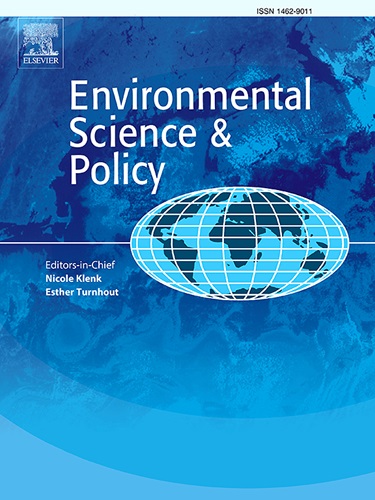Disaster capitalism in Merapi post-2010 eruption: Tracing the co-optation footprints of the disaster risk reduction agenda
IF 4.9
2区 环境科学与生态学
Q1 ENVIRONMENTAL SCIENCES
引用次数: 0
Abstract
This paper examines how the dynamics of disaster capitalism that emerged after the 2010 Mount Merapi eruption diverted disaster risk reduction (DRR) policies and generated disaster risk creation (DRC). Field observations, semi-structured interviews, and literature reviews were conducted across three districts: Sleman, Magelang, and Klaten. These districts share Mount Merapi’s upstream area and face common risks from lahar floods and river sedimentation; however, their governance contexts differ. Sleman, part of Yogyakarta Special Province under a provincial subnational monarchy led by a sultan as governor, contrasts with Klaten and Magelang, which are governed by directly elected governors in Central Java Province. While all three districts allow the utilization of Merapi’s sand resources for both economic and risk reduction purposes, DRR policies remain largely dominated by central government interventions due to Mount Merapi’s status as a national park. Applying a hybrid framework of political ecology and disaster capitalism, the findings reveal that policies intended to mitigate lahar flood risks have unintentionally encouraged extensive sand mining in the Merapi uplands, resulting in new socio-environmental vulnerabilities. Empirical evidence across the three districts demonstrates disaster capitalism footprints through widespread sand exploitation, unequal sand wealth distribution, problematic sabo dam management, vertical-horizontal governance conflicts, and fatalities linked to mining activities. This study finds that recovery processes prioritized economic extraction over genuine risk reduction, thereby marginalizing local communities and reinforcing existing inequalities. Overall, disaster capitalism has predominantly supplanted the DRR agenda associated with lahar risk, transforming it into a DRC mechanism that produces fatalities and deepens inequalities while serving the interests of specific groups and corporate actors.
2010年后默拉皮火山爆发的灾害资本主义:追踪减少灾害风险议程的合作足迹
本文考察了2010年默拉皮火山喷发后出现的灾害资本主义动态如何转移了减少灾害风险(DRR)政策并产生了灾害风险创造(DRC)。在Sleman、Magelang和Klaten三个地区进行了实地观察、半结构化访谈和文献综述。这些地区共享默拉皮火山的上游地区,面临着泥流洪水和河流沉积的共同风险;然而,它们的治理环境不同。Sleman是日惹特别省(Yogyakarta Special Province)的一部分,由苏丹作为省长领导的省级次国家君主制,与Klaten和Magelang形成鲜明对比,后者由中爪哇省的直接选举省长管理。虽然这三个地区都允许出于经济和降低风险的目的利用默拉皮山的沙子资源,但由于默拉皮山是国家公园,减少灾害风险的政策在很大程度上仍由中央政府干预。应用政治生态学和灾害资本主义的混合框架,研究结果表明,旨在减轻泥流洪水风险的政策无意中鼓励了默拉皮高地的大规模采砂,导致了新的社会环境脆弱性。三个地区的经验证据表明,灾难资本主义的足迹包括广泛的采砂、不平等的沙子财富分配、有问题的沙坝管理、垂直水平的治理冲突以及与采矿活动有关的死亡。本研究发现,恢复过程优先考虑经济开采,而不是真正的风险降低,从而使当地社区边缘化,加剧了现有的不平等。总的来说,灾难资本主义已经在很大程度上取代了与火山泥流风险相关的DRR议程,将其转变为DRC机制,在为特定群体和企业行为者的利益服务的同时,造成死亡并加深不平等。
本文章由计算机程序翻译,如有差异,请以英文原文为准。
求助全文
约1分钟内获得全文
求助全文
来源期刊

Environmental Science & Policy
环境科学-环境科学
CiteScore
10.90
自引率
8.30%
发文量
332
审稿时长
68 days
期刊介绍:
Environmental Science & Policy promotes communication among government, business and industry, academia, and non-governmental organisations who are instrumental in the solution of environmental problems. It also seeks to advance interdisciplinary research of policy relevance on environmental issues such as climate change, biodiversity, environmental pollution and wastes, renewable and non-renewable natural resources, sustainability, and the interactions among these issues. The journal emphasises the linkages between these environmental issues and social and economic issues such as production, transport, consumption, growth, demographic changes, well-being, and health. However, the subject coverage will not be restricted to these issues and the introduction of new dimensions will be encouraged.
 求助内容:
求助内容: 应助结果提醒方式:
应助结果提醒方式:


